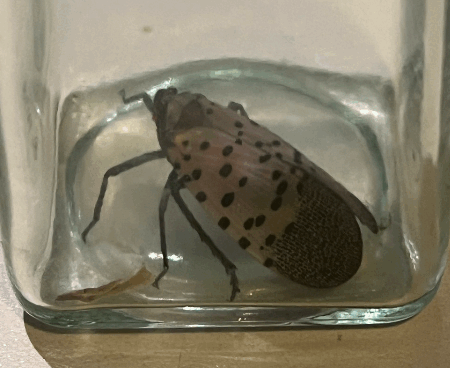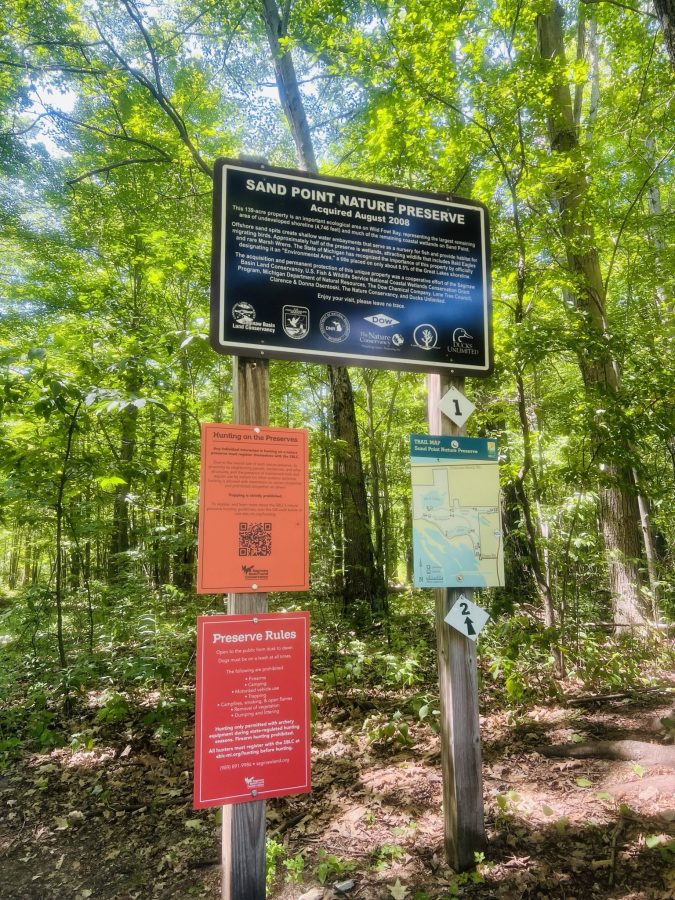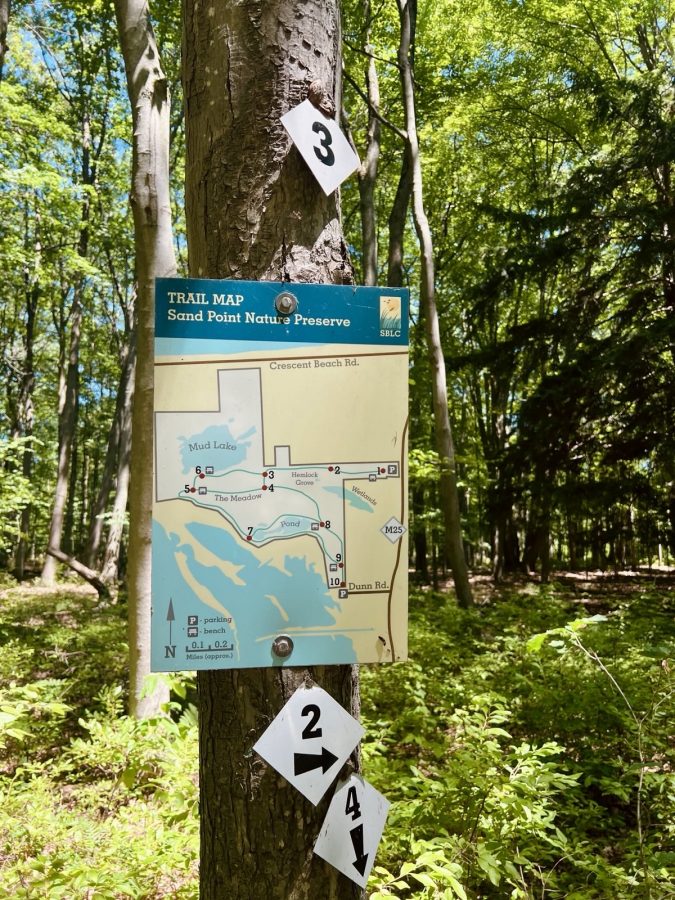Spotting the invasive spotted lanternfly in Dearborn
Last month, a highly invasive insect was spotted for the first time on the University of Michigan-Dearborn’s campus. The Environmental Interpretive Center (EIC) identified the spotted lanternfly, a sap-sucker that has been making its way across the U.S. since 2014.
The first confirmed colony in Michigan was found in Oakland County in 2022.
Program and natural areas manager for the EIC Rick Simek says that spotted lanternflies don’t usually kill their host trees outright, but as their numbers grow, so does the damage they can do to the environment as they feed.
Environmental harm
Infestation weakens the host tree’s ability to withstand disease, drought, and other pests.
“They have been known to kill off the saplings of a couple of native tree species,” says Simek. He lists black walnuts and maples as examples.
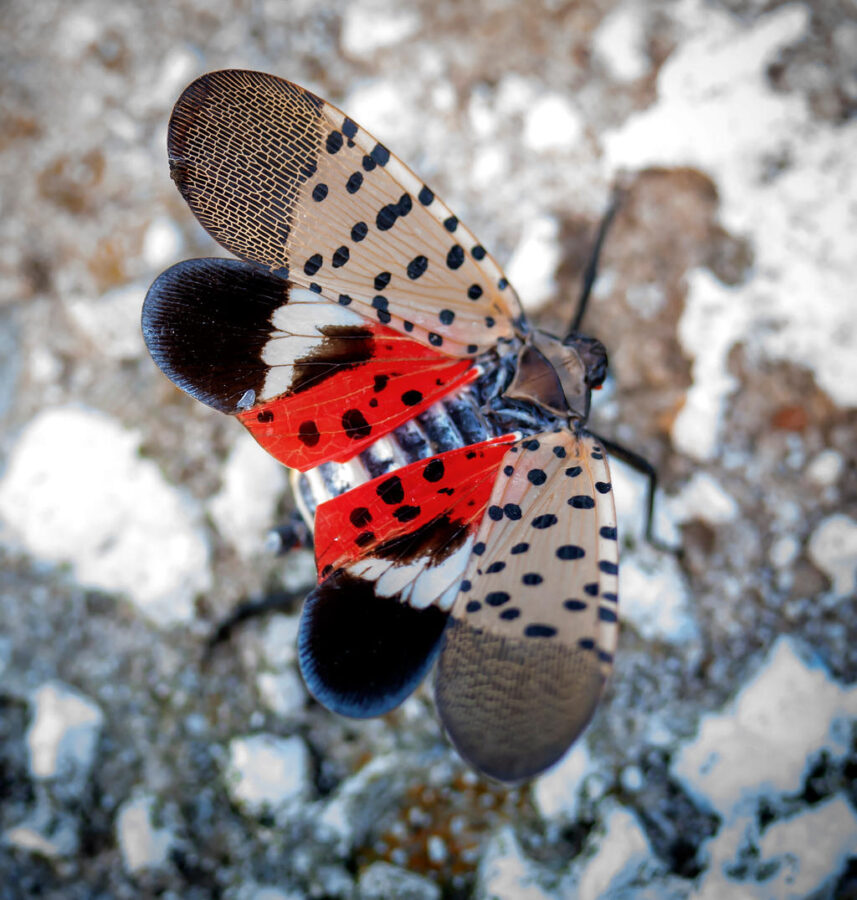
Simek said that the Spotted Lanternfly’s dietary habits are especially hard on fruit-bearing plants, like the river grapes that provide nutrition for birds in the EIC’s natural area.
The spread of the spotted lantern fly poses trouble for Michigan’s produce. “Lanternfly infestations can cause real harm to grapes, both cultivated and wild… [which is] cause for serious agricultural and economic concern.”
Thankfully, the spotted lanternflies do not bite or pose direct harm to humans. However, the sugary “honeydew” that they excrete attracts mold, wasps, and other pests.
Squish and scrape
What should you do once you identify a spotted lanternfly?
“One of the control methods— I’ve seen actual videos on this, it’s fairly commonly practiced—is to squish them!” says Simek. “Just make sure to become familiar with what lanternflies look like before squishing, but they are easy to identify.”
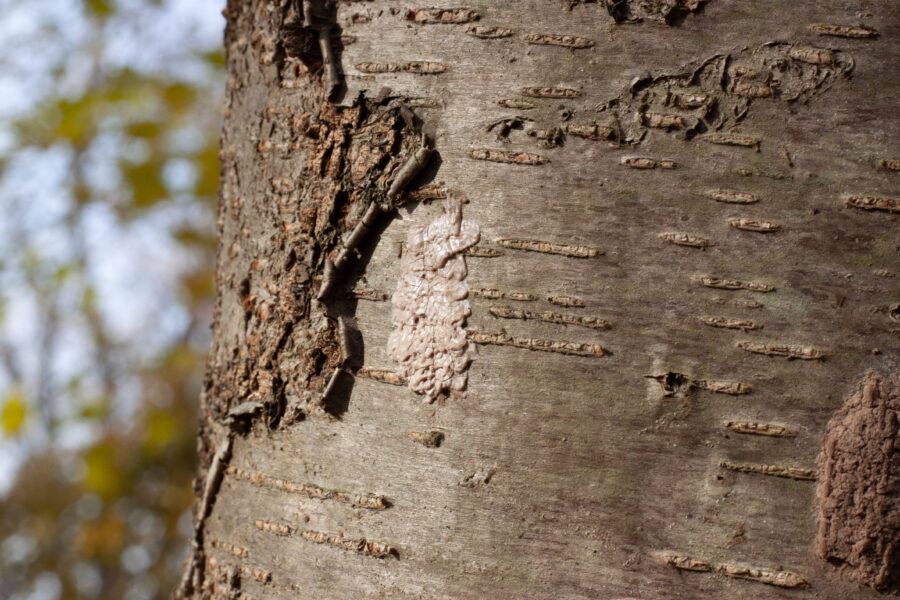
Also, remove their egg masses, which look a bit like chewed gray-brown gum, advises Simek. And it’s good to check for hitch-hiking lanternflies while entering and exiting natural areas.
Fall is the season to look for and remove egg masses before they hatch in spring.
Vigilance helps slow the spread
It’s important to reduce the spotted lanternfly’s ability to reproduce and spread as much as possible.
“One of the things we don’t want to see here on campus, of course, is for it to become a breeding area that produces lanternflies that can spread around the area even more,” says Simek. Thankfully, the EIC is well maintained and better prepared for invasive visitors.
The spotted lanternfly’s preferred host, tree of heaven, has been regularly removed from the Environmental Interpretive Center’s grounds for years. Tree of heaven is a particularly entrenched invasive plant that comes from the same region as the spotted lanternfly. As a favorite food source, it is a marker of where to look for the insect.
Additionally, birds and bats are beginning to recognize spotted lanternflies as a food source. The near 121 acres of the EIC’s natural center helps support those populations. Though, Simek notes, its being theorized that spotted lanternflies become less appetizing after eating tree of heaven.
That’s one more reason to be diligent about removing the invasive plant.
Report sightings
The spotted lanternfly’s impact on the tree canopy at large remains to be seen.
The DNR says all sightings by the public should be reported.
So far, spotted Lanternflies have been seen in Wayne, Oakland, Lenawee, and Macomb counties.
“It’s the new invasive kid on the block,” says Simek. “We’re probably going to see them more and more, and then we’re all going to find out what their impacts are.”
Trusted, accurate, up-to-date.
WDET strives to make our journalism accessible to everyone. As a public media institution, we maintain our journalistic integrity through independent support from readers like you. If you value WDET as your source of news, music and conversation, please make a gift today.Donate today »
The post Spotting the invasive spotted lanternfly in Dearborn appeared first on WDET 101.9 FM.
